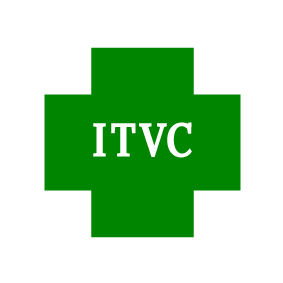Altitude sickness or Mountain sickness
OVERVIEW
The stresses of the high-altitude environment include cold, low humidity, increased ultraviolet radiation, and decreased air pressure, all of which can cause problems for travelers. The largest concern, however, is hypoxia (low oxygen to the body)
At 10,000 ft (3,000 m), for example, the inspired Oxygen concentration is only 69% of sea-level value.
The degree of hypoxic stress depends on altitude, rate of ascent, and duration of exposure. Sleeping at high altitude produces the most hypoxia; day trips to high altitude with return to low altitude are much less stressful on the body.
Typical high-altitude destinations include Cuzco (11,000 ft; 3,300 m), La Paz (12,000 ft; 3,640 m), Lhasa (12,100 ft; 3,650 m), Everest Base Camp (17,700 ft; 5,400 m), and Kilimanjaro (19,341ft; 5,895 m).
The human body adjusts very well to moderate hypoxia, but requires time to do so
The process of acute acclimatization to high altitude takes 3–5 days; therefore, acclimatizing for a few days at 8,000–9,000 ft before proceeding to a higher altitude is ideal.
Acclimatization prevents altitude illness, improves sleep, and increases comfort and well-being.
RISK FOR TRAVELERS
Inadequate acclimatization may lead to altitude illness in any traveler going to 8,000 ft (2,500 m) or higher. Susceptibility and resistance to altitude illness may be related to genetic traits, and no screening tests are available to predict risk.
Children are equally susceptible as adults; people aged >50 years have slightly lower risk. How a traveler has responded to high altitude previously is the most reliable guide for future trips, but is not infallible. However, given certain baseline susceptibility, risk is largely influenced by rate of ascent and exertion determining an itinerary that will avoid any occurrence of altitude illness is difficult because of variations in individual susceptibility, as well as in starting points and terrain.
CLINICAL PRESENTATION
Altitude illness is divided into 3 syndromes: acute mountain sickness (AMS), high-altitude cerebral edema (HACE), and high-altitude pulmonary edema (HAPE).
Acute Mountain Sickness
AMS is the most common form of altitude illness, affecting, for example, 25% of all visitors sleeping above 8,000 ft (2,500 m) in Colorado. Symptoms are those of an alcohol hangover: headache is the cardinal symptom, sometimes accompanied by fatigue, loss of appetite, nausea, and occasionally vomiting. Headache onset is usually 2–12 hours after arrival at a higher altitude and often during or after the first night.
Preverbal children may develop loss of appetite, irritability, and pallor. AMS generally resolves with 24–72 hours of acclimatization
High-Altitude Cerebral Edema-HACE
HACE is a severe progression of AMS and is rare; it is most often associated with HAPE. In addition to AMS symptoms, lethargy becomes profound, with drowsiness, confusion, and ataxia on tandem gait test.
A person with HACE requires immediate descent; death from HACE can ensue within 24 hours of developing ataxia (loss of balance) the person fails to descend.
High-Altitude Pulmonary Edema -HAPE
HAPE can occur by itself or in conjunction with AMS and HACE;
Initial symptoms are increased breathlessness with exertion, and eventually increased breathlessness at rest, associated with weakness and cough.
Oxygen or descent is life-saving. HAPE can be more rapidly fatal than HACE.
Altitude or mountain sickness awareness will be further discussed along with precaution and treatment necessary prior to travel during the consultation with our ITVC Travel Doctor
Courtesy of CDC


